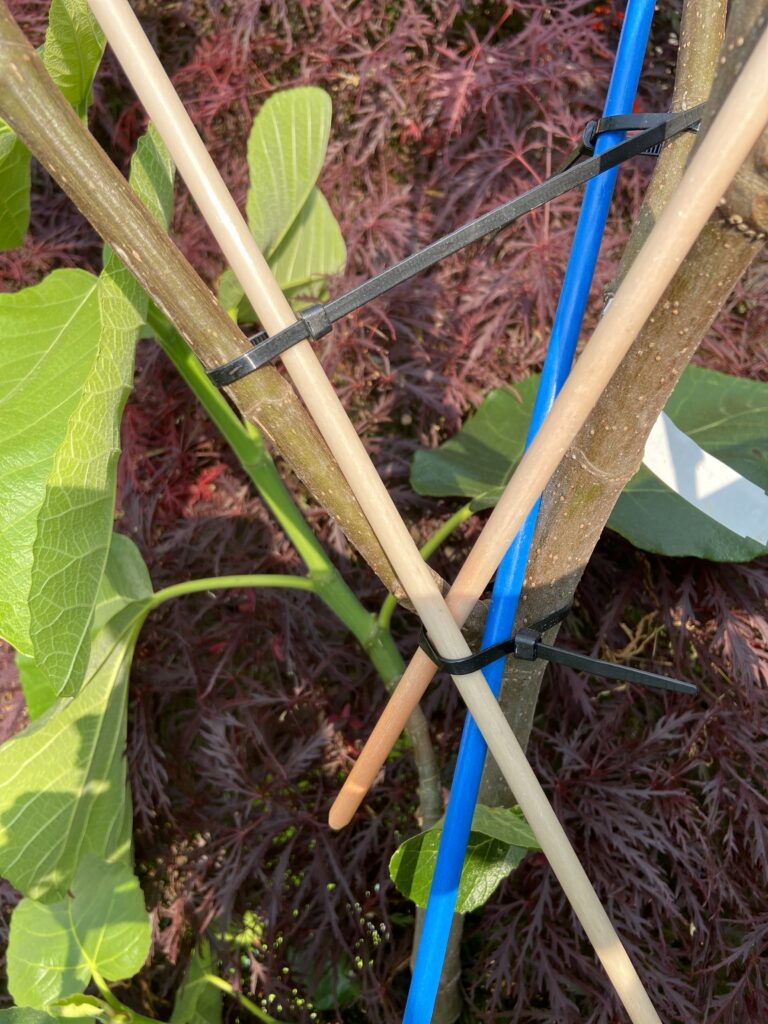Fig tree staking is a practice that involves using a support system to hold up the trunk of a fig tree. It is commonly used for young or newly transplanted fig trees, as they may not have developed strong root systems yet, or may be top-heavy and susceptible to damage from wind or other environmental factors.

To stake a fig tree, begin by selecting a sturdy wooden or metal stake that is at least 6 feet tall and 2 inches in diameter. Place the stake about 6 inches away from the base of the tree and drive it into the ground firmly, making sure it is at least 2 feet deep. Next, tie the trunk of the fig tree to the stake using a soft, flexible material such as garden twine or tree ties. Be careful not to tie the tree too tightly, as this can damage the bark or restrict the growth of the trunk.
Continue to monitor the tree and adjust the ties as needed, ensuring that the trunk remains straight and stable. It is important to remove the stake and ties once the fig tree has become firmly established and no longer requires support, usually after 1-2 growing seasons.
Fig tree staking can help to prevent damage to young or newly transplanted trees, and promote healthy growth and development. However, it is important to ensure that the stake and ties do not cause damage or stress to the tree, and that they are removed in a timely manner to avoid long-term effects on the tree’s growth and structure.
